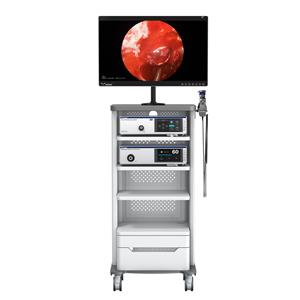The role of laparoscopy in infertility
What is the role of laparoscopy in infertility? Many people are more concerned about this issue. In fact, laparoscopy is often used in cases where the clinical diagnosis cannot be determined, such as dysplasia of the internal genitalia, tumors, inflammation, ectopic pregnancy, endometriosis, uterine perforation, and unexplained lower abdominal pain. Infertility patients are mainly used for:
1. Infertility caused by endometriosis. Mild cases are often asymptomatic, and no abnormal findings are found in gynecological examinations, which is called occult endometriosis. Laparoscopy can detect punctate or sheet-like ectopic endometrial lesions, which are purple or coffee-colored and spread on the surface of the peritoneum or pelvic organs;
2. For those with normal hysterosalpingography, if there is no other cause, about 50% of women will conceive within six months. Those who have not conceived for more than half a year should undergo laparoscopy. During laparoscopy, methylene blue is injected into the uterine cavity through the vagina, cervix, and through laparoscopy, it can be directly observed that methylene blue flows through the fallopian tube, overflows the umbrella port and enters the pelvic cavity, which proves that the fallopian tube is unobstructed. If it does not pass, the blockage can be seen. At the same time, the scope and degree of adhesion around the fallopian tube and ovary, and the anatomical relationship between the ovary and the fimbriae of the fallopian tube can be observed, so as to estimate the peristalsis of the fallopian tube and the function of picking up eggs.
3. All infertile patients with a history of postpartum infection, pelvic inflammatory disease, pelvic surgery, and appendix surgery should undergo laparoscopy to detect possible pelvic adhesions early and separate them. Differentiate between tuberculous pelvic inflammatory disease and chronic pelvic inflammatory disease and endometriosis and other diseases that are difficult to diagnose clinically. Pelvic tuberculosis can be diagnosed as miliary nodules, cheese-like objects, calcified nodules, and rigid and beaded fallopian tubes.
4. Polycystic ovary syndrome. In some cases, the symptoms are very atypical, and there are no typical signs on examination. The increase in luteinizing hormone is not obvious. Laparoscopy is helpful for diagnosis;
5. Unruptured luteinized follicle syndrome: For those who cannot be diagnosed by B-ultrasound, laparoscopy can distinguish ovulation or not. The time of microscopic examination should be when the basal body temperature rises for 2 to 4 days.
- NEWS
- BLOG
- Industry News
- Company News




